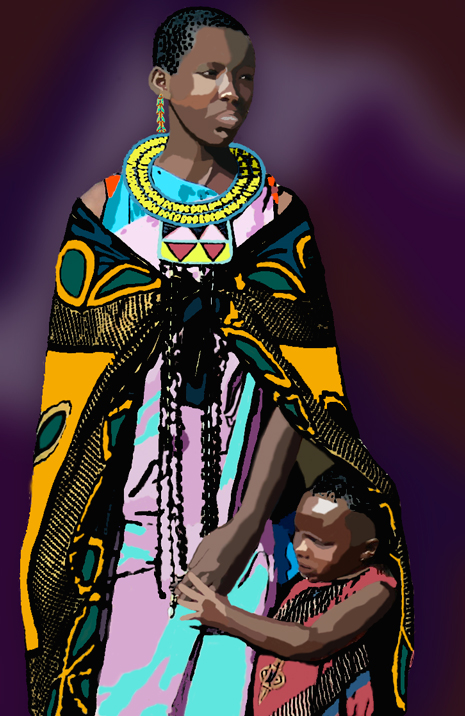Private health institutions account for 60% of total medical equipment and supplies (import value). Kenya also has a well-developed pharmaceutical industry that can produce most medications recommended by the World Health Organization.
One particularly noble effort in the Chyulu area is that by Philanthropist Anne Lurie; her clinics serve a population of approximately 90,000 indigenous Maasai and transient members of other tribes, scattered across 1400 square miles in southeast rural Kenya.
A staff of 4 physicians and 105 health care workers and support staff, all Kenyan, operates the Clinics and sees an average of 1750 patients per month at both a fixed-base compound located 125 miles southeast of Nairobi at Mbirikani and from a mobile trailer outfitted as a clinic that traverses the area.
|
The government is addressing malnutrition, affecting an estimated 33% of children under five as of 2000, but also top among Kenya's major health problems are tuberculosis and endemic malaria.
Water supply sanitation, bilharzia, and sleeping sickness also pose major problems; only 49% of the population has access to safe drinking water and only 86% had adequate sanitation.
|
|

As of 2002, the crude birth rate and overall mortality rate were estimated at 27.6 and 14.7 per 1,000 people respectively. As of 2000, 39% of married women (ages 15 to 49) were using contraception.
Average life expectancy was 47 years in 2000 and infant mortality was 78 per 1,000 live births. The fertility rate was 4.4 children per childbearing years of a Kenyan woman as of 2000.
Immunization rates for 1997 for children up to one year old were fairly low: tuberculosis, 42%; diphtheria, pertussis, and tetanus, 36%; polio, 36%; and measles, 32%. |
Malnutrition affected an estimated 33% of children under five as of 2000.
There has been a rapid spread of AIDS since the 1980s. At the end of 2001, the number of people living with HIV/AIDS was estimated at 2.3 million (including 15% of the adult population) and deaths from AIDS that year were estimated at 190,000.
We are developing a relationship with the Africa Foundation, and suggest that you visit Kenya and Tanzania if you can on a combined photographic safari, which was where the AHHF founders took the pictures included on this page. HIV prevalence in 1999 was 13.95 per 100 adults.
|
|